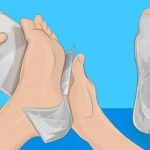At any time and for any situation, the ability to learn quickly is a quality that will help you grow professionally and have greater recognition in the workplace. But what if you do not have it? – Don’t worry, there are ways to develop it. What follows is a list of 6 tips on how to learn things quickly and easily.

Every day, people always come across something new to learn, for both their profession and their personal relationships. And so try small things, at some point in your life, they can be very useful. But since over time, the brain learns new things and forgets others that are no longer used in its current stage of that happened long ago. Therefore, it is important to ensure that everything new is learned, and is really retained. And although there are practical activities that keep the brain “fit” as sleep, exercise, meditation, or having a defined daily routine; there are other methods that you can learn new things and knowledge better and faster.
01. Do one thing at a time
Although we are in the era of “multitasking” or doing several things at the same time, the performance of the brain is much higher when the concentration is on a single activity. And that detracts productivity when one tracks a task while doing something, and it will take more time to finish. Research has shown how multitasking does not have a complete connection between neurons in the brain.
02. Compress information
Everything taught in school about conceptual or mental maps, to the use of acronyms and rhymes are quite useful for the information the brain acquires. It is identified that having a trigger is very useful, which is, if you remember the first word, the rest of the information will come out quickly. The Huffington Post notes that nmemotécnicos use devices that convert the information into maps that track and more easily relate the information. Even visualization techniques, such as using various colors, are also quite useful for visual memory.
03. Connect to the existing knowledge
Or what is also known as contextualizing and understanding the cause/consequence; it is a way to connect the new knowledge with the old, which is quite useful. This also relates to the “rate of recovery of memories”, so that the information arrives much faster.
04. Fieldwork
This means that it is much better if you live an experience, it is better than reading. If this is something you really think you will need, spend the time to make several practical exercises in which you’ll test what you’ve learned. The more trials and errors committed, the knowledge will be “better embedded”. But if it is something purely abstract, also look for the right, quiet and noiseless space that allows you to have a higher level of concentration.
05. Write it all
Write it all on PAPER, please. Although the digital era provides many options rather than writing – for instance, video recording; various scientific research has shown how the use of writing affects the learning of individuals, activating other brain areas. Use your hand and have a little “more direct” touch with what you are learning. It will undoubtedly help the retention of your brain and the information to a much higher degree.
06. use multi-sensory techniques
website Gear Fire emphasizes that everything that involves more than two ways, will have a much higher level of recall, adding that it is also a more fun experience and pleasant. The most common is the combination between the visual and the tactile, but perhaps he/she who dares to add a scent or a particular sound, the experience will be better for him/her; for example, if you need to learn and memorize any law, use a particular freshener or flavor while doing certain studies. Thus, the aroma can also be a trigger that will help bring information faster to your head.



